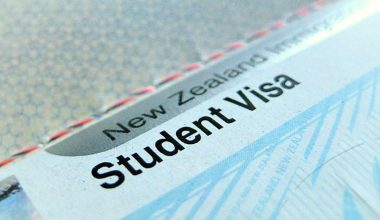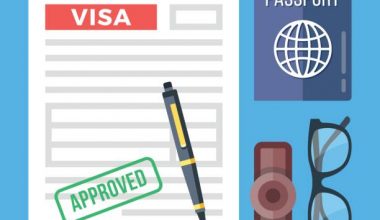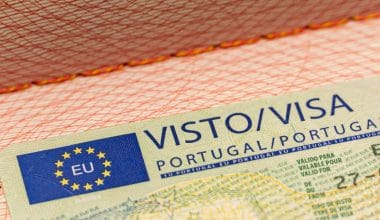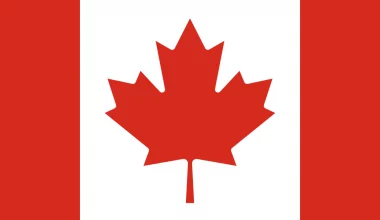Are you thinking about studying abroad and want to apply to study in Italy? You should know that Italian universities are among the most prestigious in the world. You will experience excellent teaching and enjoy the famous cuisine, magnificent architecture, and many breathtaking attractions.
Additionally, a student visa in Italy is one of the easiest student visas to get. The processing time is low, and the fees for processing the student visa in Italy are also very affordable.
If you have decided to study abroad, put together, and wondering what steps you need to take care, then this article is for you.
In this article, the types of student visas you need have been explained. In addition, you will also find the requirements and a step-by-step guide on how to apply for a student visa in Italy. Keep reading.
Table of contents
- Why Choose a Student Visa in Italy?
- Types Of Student Visa In Italy
- How Student’s Visas Work in Italy
- Requirements Or Eligibility Criteria for Student Visas in Italy
- How Long Is The Italy Student Visa Valid?
- Fees and Cost of Student Visa In Italy
- How to Apply For a 3Student Visa In Italy?
- Student Visa Processing Time In Italy
- Can I Get A Student Visa In Italy Without IELTS?
- Working While Studying In Italy
- Frequently Asked Questions
- Conclusion
- References
- Recommendations
Why Choose a Student Visa in Italy?
If you are an international student, the reasons you should get a student visa in Italy are:
- Unlike other schools, the cost of education in Italy is quite affordable, so of course, getting a student visa in Italy is also affordable.
- When you have a student visa in Italy, you can easily change schools or even switch academic programs.
- A student visa in Italy gives you the liberty to work while studying.
- With a student visa in Italy, you can access various benefits like grants, scholarships, and loans.
- Having a student visa in Italy is also a way to fully explore discounts and the many benefits international students in Italy enjoy.
Types Of Student Visa In Italy
In Italy, depending on the length of the study program, there are two types of student visas:
- Type C visa: A short-stay or travel visa valid for one or more entries and a period of only 90 days.
- Type D visa: A visa that is valid for over 90 days.
The procedures for applying for Italian student visas are subject to change, so it’s always a good idea to check with the Italian Embassy for the most up-to-date information.
If you enter Italy with a type D visa, you must also report your arrival at the Questura station within 8 days of your arrival. You will be sent a residence permit card to prove your legal residency status in the country.
Start the process well ahead of your intended date of entry into Italy, regardless of the type of visa you require, as processing time can be lengthy.
How Student’s Visas Work in Italy
If you fall into one of the following categories, you will need a short-stay visa to enter Italy and any other Schengen member country:
- You are a national of a third-world country that has not reached a visa-free agreement with the Schengen states.
- You are a national of a third-world country that has signed a visa-free agreement with the Schengen states, but they have previously denied you entry into Italy or any other Schengen country.
The Italian authorities want you to show that you have the financial resources to support yourself during your stay in Italy. Depending on the length of your stay, you must show proof of the following amounts.
- Up to 5 days: The total cost is € 269.60 per person and €212.81 for groups of two or more.
- 6-10 days: The daily rate is €44.93 per person and €26.33 for groups of two or more.
- 11-20 days: The total cost is €51.64 per person and €25.82 per two or more people, plus a daily cost of €36.67per person and €22.21 per two or more people.
- Over 20 days: The total amount is €206.58 per person and €118.79 per two or more people, plus a daily amount of €27.89 per person and €17.04 per two or more people.
Requirements Or Eligibility Criteria for Student Visas in Italy
There are requirements necessary for a student visa in Italy. The documents you would need are-
- Form for requesting an entry visa
- A recent passport-size photo (s)
- Authentic travel documentation (the expiry date should be three months longer than that of the visa requested)
- Evidence that you have arranged for lodging in Italy (for the whole period of your studies)
- Demonstrate that you have sufficient financial resources to support your studies (at least 900 EUR per month).
- For the first year of studies, a health insurance policy of 150 EUR.
- A copy of a previous education diploma
- Letter of Acceptance from an Italian University
- Payment of the visa application fee (50 EUR)
Related Article: UK Student Visa Requirements 2023 [DETAILED]
For Non-EU residents
If you are arriving from outside the EU, you must apply for a residence permit (permesso di soggiorno) at any post office within 8 days of your arrival. The following are the primary documents that must be submitted:
- Passport photocopy
- A copy of your healthcare plan
- Italy’s national student visa
- A copy of the statement attesting to the studies you will pursue in Italy.
- Four recent passport-sized photographs
- European Union citizens
- Simply apply for a declaration of presence (dichiarazione di presenza) at the police headquarters (Questura) within 8 days of your arrival in Italy.
- Now that you know how to get a student visa in Italy, you can apply for your desired Bachelor’s or Master’s degree. After being accepted by an Italian university and completing the visa application process in your home country, you can begin packing your belongings and making travel plans.
How Long Is The Italy Student Visa Valid?
90-day period. The visa is the Italian government’s approval for you to remain in Italy for the duration of your study abroad program. The Italy student visa is known as National Visa D, and it is a long-term visa, which means you intend to stay in Italy for over 90 days.
Fees and Cost of Student Visa In Italy
When considering getting a student visa in Italy, of course, you should know some costs associated with it. For an adult, expect to spend at least $96. It is, however free for children younger than 6 years of age. It is also free for diplomatic, official, or service passport holders traveling for officials.
How to Apply For a 3Student Visa In Italy?
Step 1: Accept a University Offer
Pay any fees required to secure your place at the Italian university of your choice.
Step 2: Call or Go to your Nearest Consulate or Embassy
Determine the exact visa process for your home country, including the documents required, and schedule an interview for your Italian visa application.
Step 3: Meet all the Prerequisites
The following are the requirements for obtaining a student visa in Italy:
- A valid passport with at least two blank visa pages is required.
- A copy of your flight itinerary is required.
- You must not have any criminal history.
- You must not have previously been denied entry into Italy.
Step 4: Go to a Visa Interview
Submit the requested documents and pay the application fee.
Step 5: Sit Back and Wait for the Results
You will be notified in writing of the outcome of your visa application.
Step 6: Obtain a Residence Permit
You must apply for your residence permit at your nearest Questura — a type of police station — within eight days of arriving in Italy. This step must also be completed within 20 days of entering the country for EU students.
Step 7: Apply for an Italian Student Visa
Because your permit may take several months to be created, it may issue you a temporary document.
Student Visa Processing Time In Italy
The processing time for your visa application should be between one and three weeks, but you should try to schedule your visa interview at least six weeks in advance.
That means you should begin the process at least two to three months before your departure date. If you wait too long, any delays in the process may cause you not to receive your visa on time.
Can I Get A Student Visa In Italy Without IELTS?
There are no specific language requirements for obtaining a study visa in Italy. Since this is one of the mandatory requirements for admission to an Italian university, consulates do not believe applicants should also present proof of language proficiency.
However, visa officers will be more impressed and grateful if you speak at least conversational Italian. For example, you can say “hello” and introduce yourself in Italian.
You must pass one of the following English language tests to pursue an English-taught degree at an Italian university:
- TOEFL
- iBT
- PTE Academic
- IELTS Academic
Before scheduling an examination date, determine which test or tests the university accepts.
Working While Studying In Italy
If you are a citizen of the European Union, it permits you to work in Italy without a work permit. Nonetheless, your work schedule should not exceed 20 hours per week during the semester. If you want to work full-time, you can only do so during the semester breaks.
Foreign students outside the EU must apply for a work permit in Italy at a local immigration office. However, you must present a signed employment contract and a copy to the immigration office. You might not pay for your tuition with a part-time job.
Getting a student job is not that difficult, especially if you speak a little Italian. You can even find work at your university as a library assistant or office attendant for the academic year.
The best places to look for job listings are regional job portals, newspapers, and the international office help desk.
Frequently Asked Questions
Processing time with USCIS can range from 6 to 8 months, plus mailing time, or longer, depending on the USCIS processing time. You are not permitted to leave the United States while your application is pending. Applicants in B-2 status may not enroll in classes until they have changed to student status or another status that allows them to do so.
Obtaining a student visa in Italy is simple and quick, and those who move there based on such a visa must also register with the police department in the city where they live within 8 days of arrival.
Enrollment in a university course or pre-enrollment in a university course; Evidence that you have a place to stay in Italy; Proof of financial help (at least €467,65 per month for the academic year, for €6.079,45 per year)
If your Italy visa application is approved, you will be given a passport sticker.
Many people who apply for Schengen visas from Italy are required to attend an in-person interview. Don’t be alarmed if you receive an invitation to an Italy embassy interview as part of your Italy visa requirements.
This visa allows you to travel in and out of Italy and the other Schengen countries for the first 90 days of your visit; after that, you will do so only with a stay permit.
Conclusion
The submission of the required documentation does not guarantee visa issuance. Even if you have a visa, Border Authorities can check the documents required for the visa issue again when you enter Italy and the Schengen Area.
Getting a student visa in Italy is simple and quick, and those who move here based on such a visa must also register with the police department in the city where they live within 8 days of arrival.
References
- immigration-italy.com– Obtain a Student visa in Italy
- mastersportal.com– How to get a student visa for Italy.
- studee.com– how to apply for an Italy student visa
- visaguide.world– Italy visa- long-stay student
- studyinitaly.esteri.it– Student visa in Italy
Recommendations
- How To Apply For a Student Visa In France | Interview, Requirements, Permit
- Sure Tips to get China Student VISA Fast
- Simple Step by Step Procedures to get South Africa Student VISA [Details]
- How Long Does a Student Visa Last & How can I Renew?
- Easy Step by Step Procedures to get Singapore Student Visa





